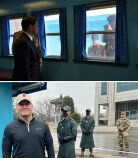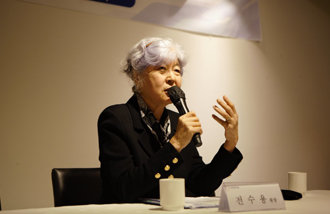US to expand strategic asset deployment to counter N.K.’s provocations
US to expand strategic asset deployment to counter N.K.’s provocations
Posted November. 14, 2022 07:55,
Updated November. 14, 2022 07:55
‘Military and security presence’ mentioned by the White House means the practical strengthening of U.S. forces stationed in Korea, going beyond the expansion of military drills between South Korea and the U.S. and among South Korea, the U.S., and Japan. Accordingly, some watchers say the Joe Biden administration could increase the operational combat forces of the US troops stationed in South Korea and Japan through the expansion of rotational deployment of U.S. troops by going beyond the deployment of American strategic assets in the event the North conducts a seventh nuclear test.
When the Biden administration deployed additional U.S. troops to the Eastern Frontlines of the North Atlantic Treaty Organization in the wake of the Ukraine War, Washington used the expression ‘reinforcement of military presence.’ Seoul, however, has some doubt over whether the U.S. will immediately expand troops stationed in South Korea. “It will not be an expansion of U.S. troops, and we believe Washington here mentioned more specific measures in connection with the deployment of strategic assets,” an official at the South Korean presidential office said on Saturday.
Washington’s purported measures to beef up military forces in the region that are discussed before others include a significant increase in the frequency of mobilization of strategic assets, including B-52 strategic bombers and nuclear-powered submarines capable of mounting nuclear warheads. Earlier, South Korea and the U.S. agreed to expand the frequency and intensity of strategic asset deployment to generate an effect on par with their ‘constant deployment’ at the 54th Security Consultative Meeting. “After the leaders of South Korea and the US agreed in large part to expand the rotational deployment of strategic assets in their May summit, the military authorities of the two countries are increasingly going into details about follow-up measures,” a South Korean government source said.
In addition to increasing the scale and frequency of joint military drills between South Korea and the U.S. and among South Korea, the U.S., and Japan, watchers say Washington will take steps to expand operational forces of the U.S. military stationed in South Korea and Japan through, among others, rotational deployment of U.S. troops. In its National Defense Strategy Report released last month, the U.S. defense department said, “We will continue major infrastructure investment in the Indo-Pacific region,” adding, “We will beef up defensive military forces through continued investment in air defense and missile defense systems in South Korea, Japan and Australia, and joint military drills with them.”
The U.S. recently deployed MQ-9 Reaper strike drones in Japan and is currently upgrading F-15 fighter jets deployed in Japan’s Kadena Airbase with F-22 stealth jets, considered the most advanced in the world. Some analysts say Washington could strengthen missile defense systems in the Indo-Pacific region, including deployment of additional terminal high-altitude aerial defense systems (THADD).
Kyu-Jin Shin newjin@donga.com
Headline News
- US: Japan will double its defense budget, and so should S. Korea
- Trump's win could present opportunities for S. Korean defense firms
- ‘Don’t expand the war in Ukraine,’ Trump tells Putin
- Korean fencing men's sabre wins World Cup team event
- Yoon who should take the lead and reinvent for the second half of his term







